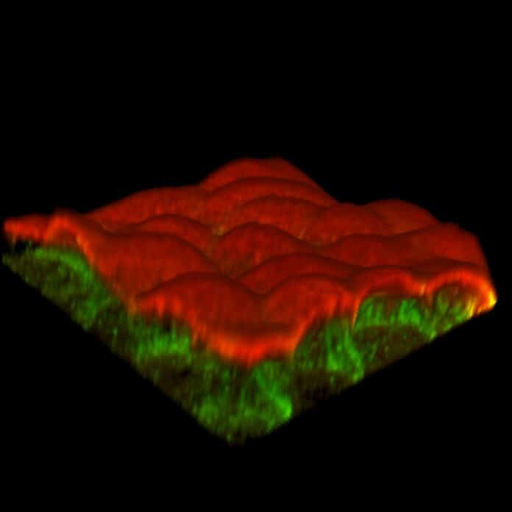Isoforms of Actin: Detection of Cellular Dynamics
Cells, the basic units of life, undergo complex transformations that significantly affect their function, growth, division, and maturation. Researchers from the University of Göttingen and Warwick delve into the world of cell mechanics, focusing on actin, a critical cellular component. Actin appears in two forms, gamma and beta, each with subtle but significant differences.
Detection of actin dynamics
Actin, a protein important for cellular structure, plays a pivotal role in shaping skeletal networks. The study, published in the journal Nature Communications, thoroughly examined the distinctive properties of gamma and beta-actin forms. Through specialized biophysics and bioengineering techniques, the researchers isolated and analyzed each isomorphism, revealing unique properties.
Gamma Actin: Solid Networks at the Top
The study found that gamma-actin tends to form solid networks near the top of the cell. This behavior is attributed to its stronger interaction with specific positively charged ions, making its networks more rigid compared to beta-actin.
Beta-actin: parallel packages with a distinctive pattern
In contrast, beta-actin shows a preference for the formation of parallel packages with a distinct organizational pattern. The micrographs of the study clearly demonstrate the separation of actin isotopes within cell groups, focusing on subtle and influential differences.
Implications for Cellular Biology
Professor Andreas Janschoff from the University of Göttingen emphasizes the pioneering nature of these findings. The research not only advances our understanding of basic cellular processes, but also sheds light on the dynamics of cellular protein networks. These ideas spread across cellular biology, especially in fields such as evolutionary biology.
Beyond the immediate range: wide-ranging effects
The implications of this research extend far beyond the immediate scope, affecting the broader field of cell biology. Professor Janshoff emphasizes the potential of these discoveries to reshape our understanding of cellular dynamics and contribute to advances in diverse scientific disciplines.
Conclusion: Small changes, profound effects
In conclusion, the study of small changes in cell structure, especially in the isotope forms of actin, reveals significant effects on cellular behavior. These findings, published in the journal Nature Communications, provide important insights into the dynamics of protein networks within cells.
The study, led by researchers from the Universities of Göttingen and Warwick, advances our understanding of basic cellular processes and offers potential applications in evolutionary biology and various scientific disciplines. The research confirms how subtle modifications can profoundly affect cell functions, opening up new avenues for further exploration and discovery.
Q&A Section:
Q1: How do gamma and beta-actin differ in their network configurations?
A1: Gamma actin forms solid networks near the top of the cell, while beta-actin creates parallel beams with a distinct organizational pattern.
Q2: What are the potential applications of research in evolutionary biology?
A2: Study insights offer potential applications in evolutionary biology, reshaping our understanding of basic cellular processes.
Q3: How do the results affect broader scientific disciplines?
A3: Prof. Janshoff highlights the potential of discoveries to contribute to progress in diverse scientific disciplines.
Meta Description: Explore the complex world of cellular transformations as researchers discovered the subtle differences between gamma-beta-actin forms. This study, published in the journal Nature Communications, reshapes our understanding of underlying cellular processes, with wide-ranging implications for evolutionary biology and various scientific disciplines.

